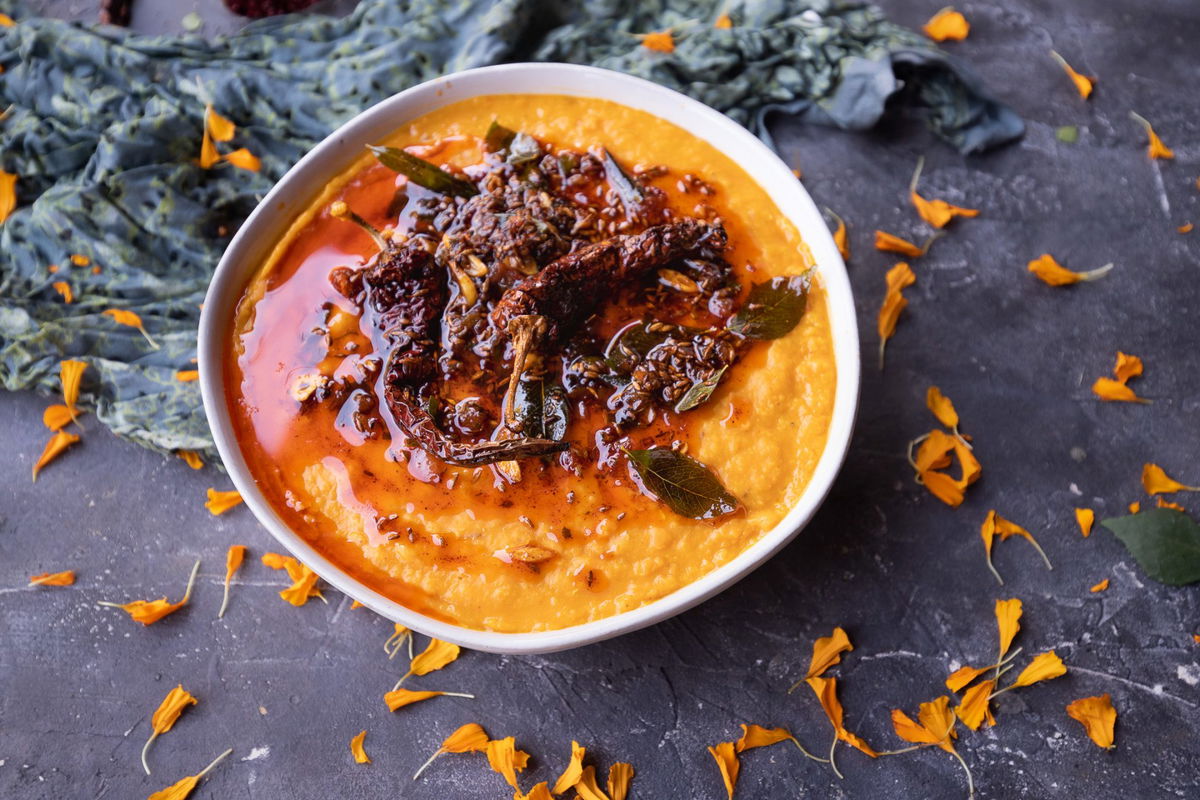Yavagu is a porridge enjoyed in India for well over 2,000 years. It is mentioned frequently in old texts like the Mahabaratha and Ramayan and is much praised by Ayurveda. Today it is most often prepared as a rice porridge, but it can be made with any grain. Here I make it with red rice for the added health benefits of red rice.
About the Recipe
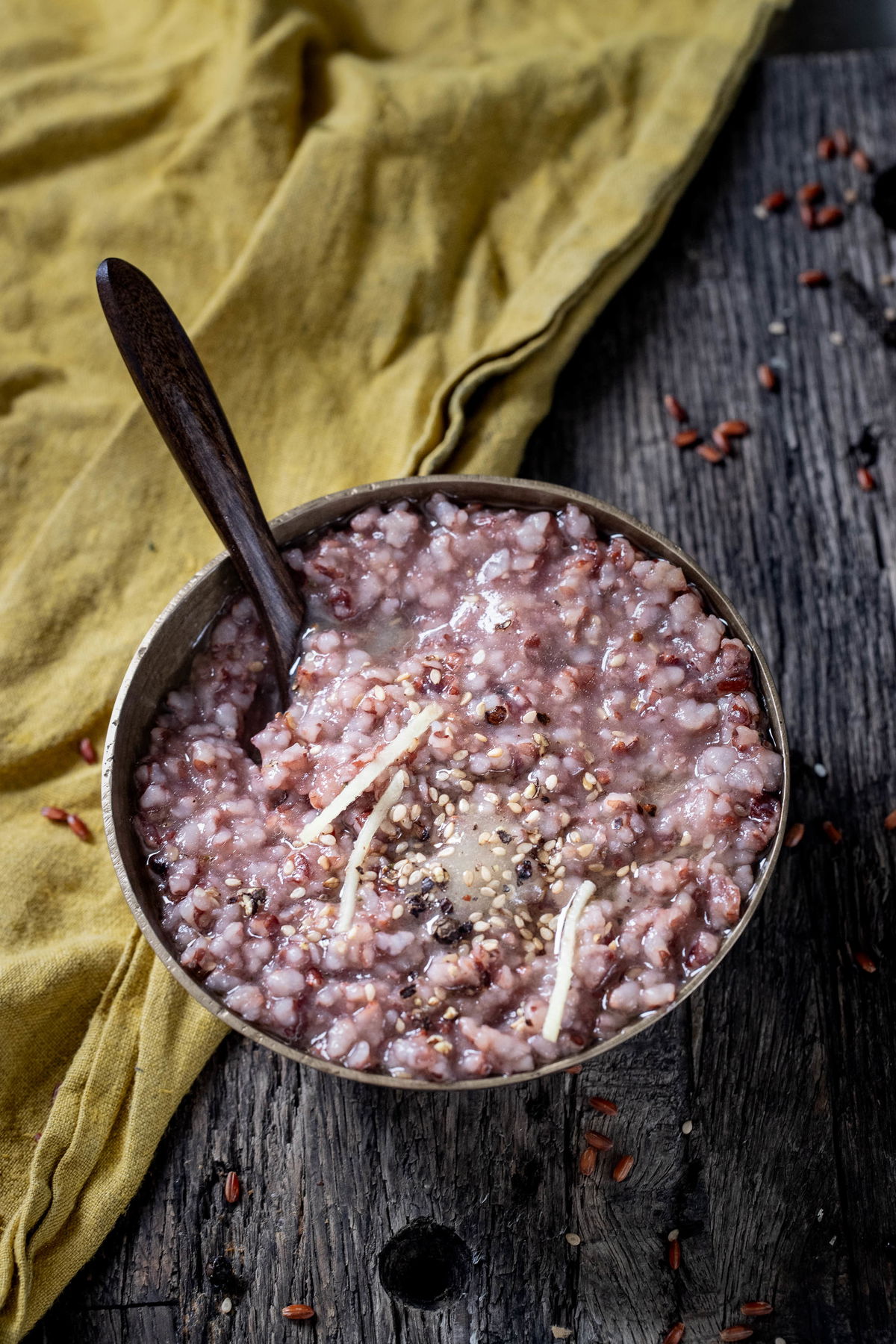
This is an ancient porridge or gruel that frequently comes up in written references in ancient Indian texts. The traditional ratio of rice to water is 1:6, but I found this to be too dry. I’ve upped my water to give it a more porridgy texture.
As a porridge, it is typically served mildly spiced, but it can easily be amped up with any spices of your choosing. This is a great dish for experimenting with. It has a pleasant creaminess from the starch, and with the red rice, it has a brown rice kind of texture that has a little more tooth than white rice. It’s a great base to add anything from meats to lentils or even just eat on its own with some toppings such as ghee and ginger.
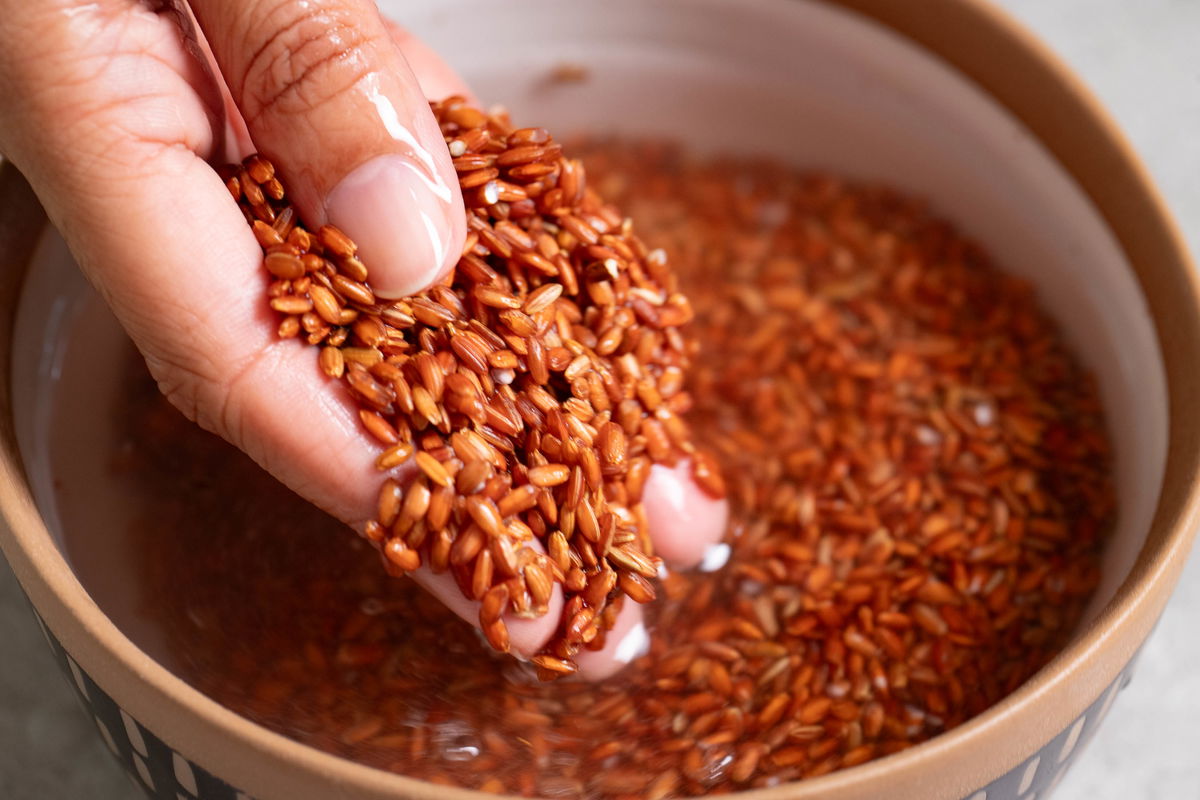
Sometime around 2,300 BCE, the main grain of India slowly switched from barley to rice. Before that time, the recipe was mostly made with barley, but now it is made with rice. But it could be made with any grain, and India has many options.
For other ancient recipes, try red rice poha or shrikhand.
Ingredients
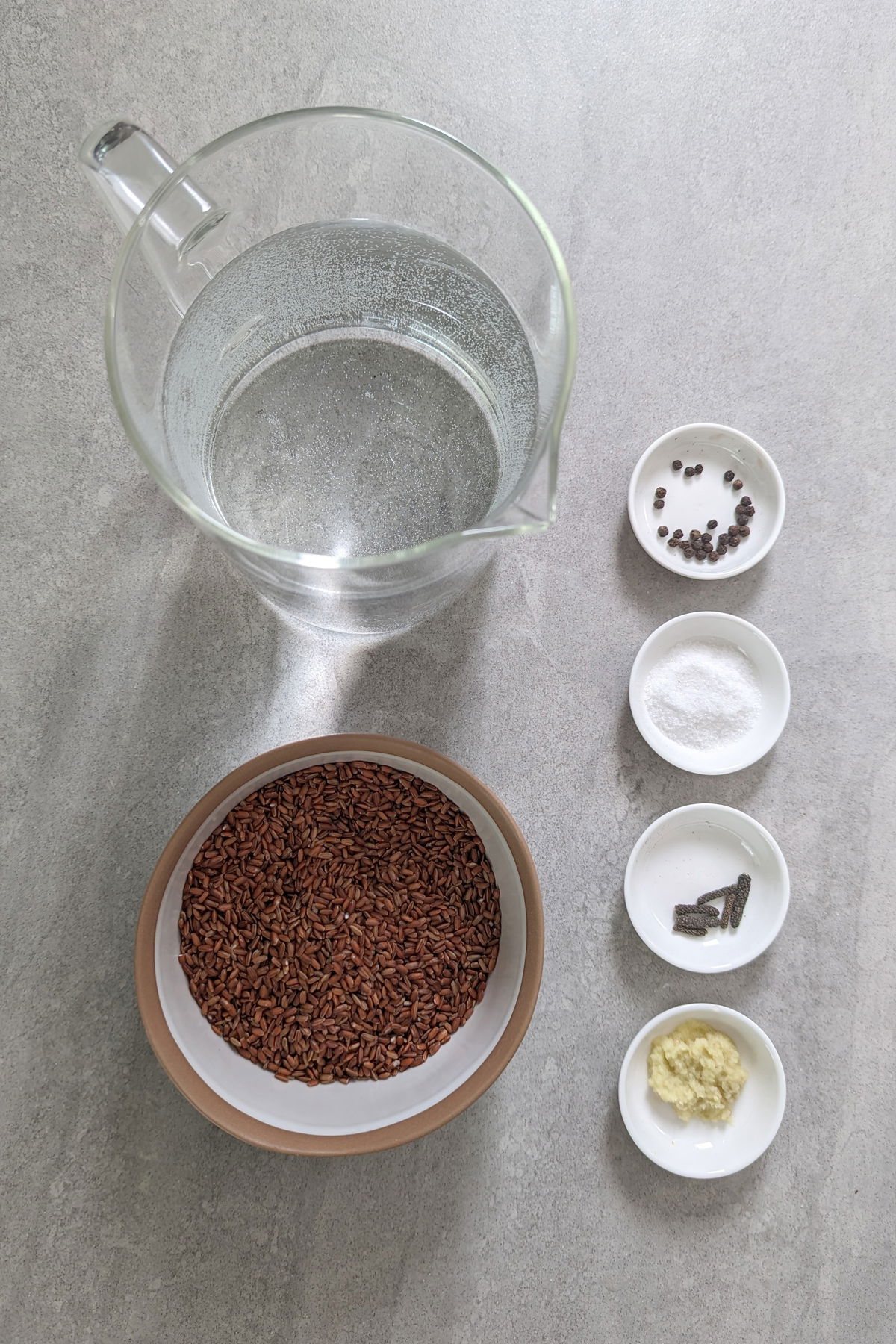
Red rice – Red rice is an appropriate choice for this recipe because Ayurveda considers it to be very healthy, and it is a historical grain. The red comes from natural anthocyanins in the rice, which offer anti-inflammatory, anti-diabetic, and other health benefits. However, if you are making this from your pantry, you can easily substitute brown or white rice if you alter your cooking time to compensate (see recipe).
Ginger
Black Pepper
Long Pepper
Sea Salt
Ghee – optional, as a topping
I’ve kept the spices to a minimum for this recipe because that is how it would traditionally have been made. Ginger, black pepper, and long pepper all have a long tradition in Ayurvedic food.
Punch it up to suit more modern tastes. To punch it up, try adding coconut milk, turmeric, fennel seeds, ajwain, or garlic, or try experimenting with your ideas.
Serving Yavagu
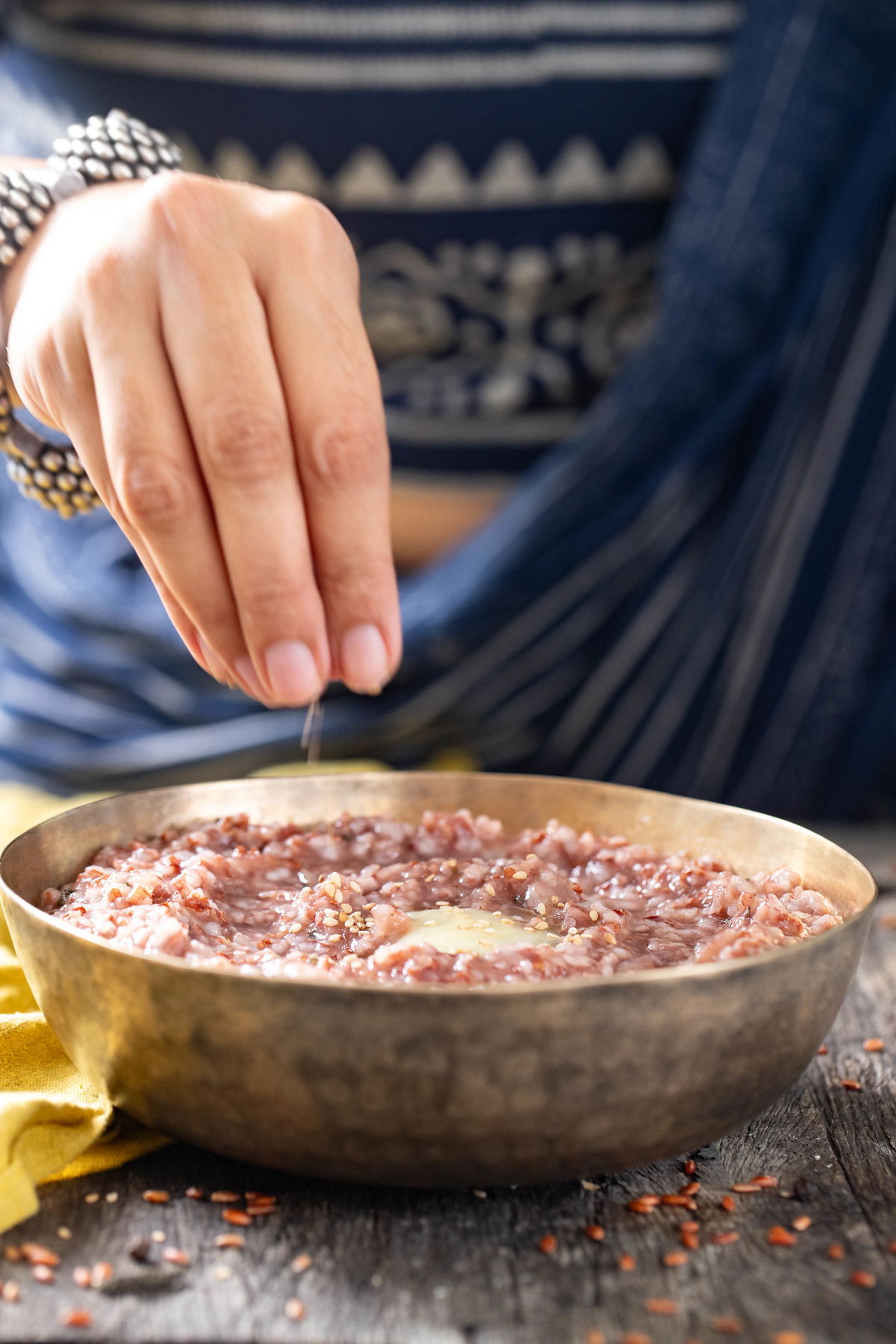
Much like khichdi, Yavagu is something you can serve at any meal. It would make for a wonderful, simple breakfast or as part of a thali. It can easily stand in for a regular rice dish to provide a change in texture.
Yavagu goes well with a dry shaak or a chicken curry, like long pepper chicken. To eat it on its own, you might serve it with ghee or some chili oil, a dollop of yogurt, dry shaak, or some lentils.
Refrigeration
Like other rice dishes, yavagu will keep in the refrigerator for up to 5 days and can be reheated on the stove or in the microwave. It’s best not to let it sit out too long before putting it in the refrigerator.
Yavagu | Indian Red Rice Porridge
Yavagu is an ancient Indian rice porridge. Here it is made with red rice for extra health benefits, but can be made with any rice.
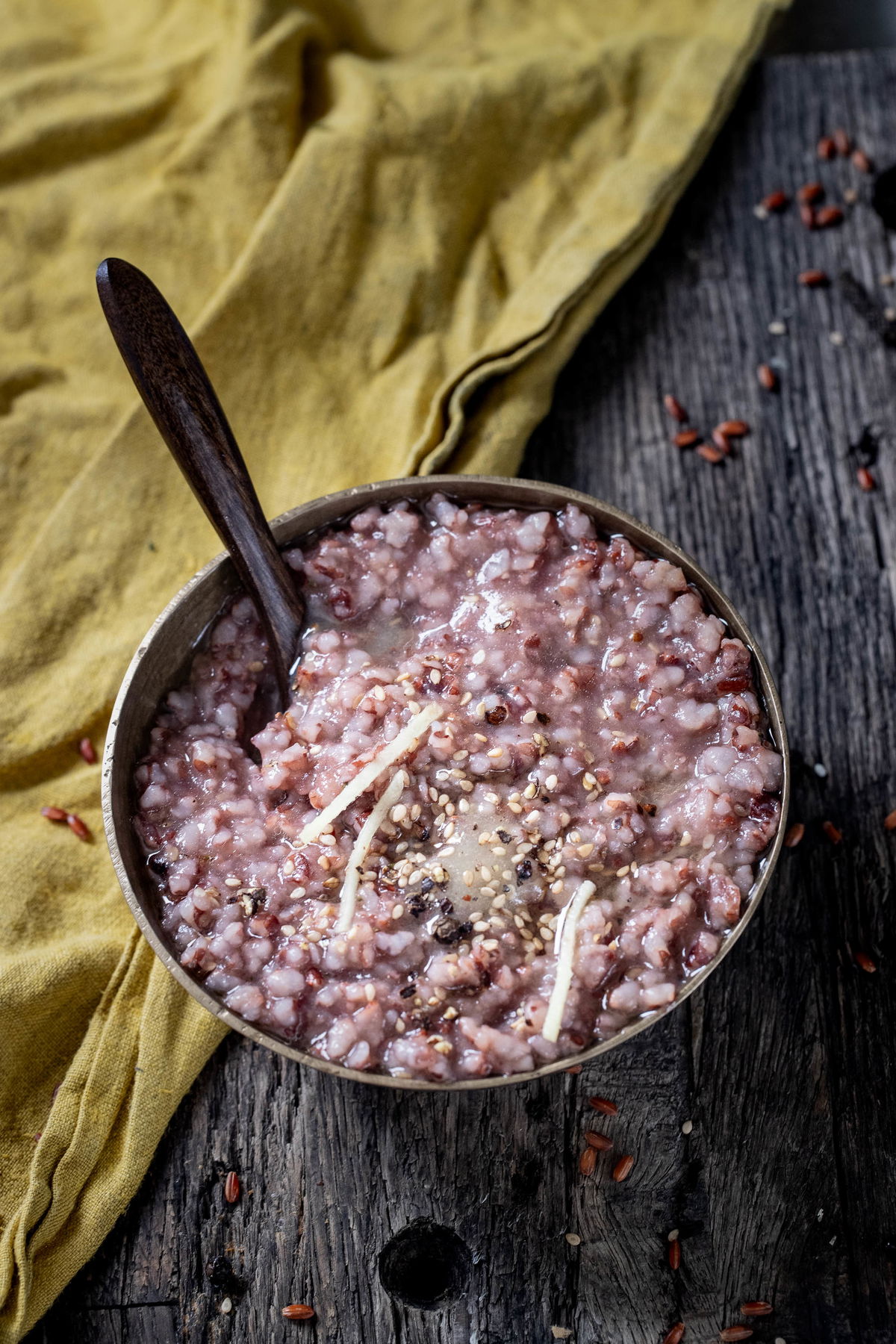
Ingredients
- 1 cup red rice
- 8 cups water
- 1 tsp ginger (grated to a paste)
- 1/4 tsp long pepper (ground)
- 1/2 tsp salt (or to taste)
- 1/4 tsp black pepper (ground)
Instructions
- To a 2-3 quart pot, Add water, salt, and ginger to a pot. Bring to a boil over high heat.
- Add the rice. Simmer for 60 minutes, covered.
- Add the long pepper and black pepper. Stir and serve.
Notes:
You can use a rice of your choice. For brown rice, simmer for 45-55 minutes. For basmati rice, simmer for 18 minutes.
